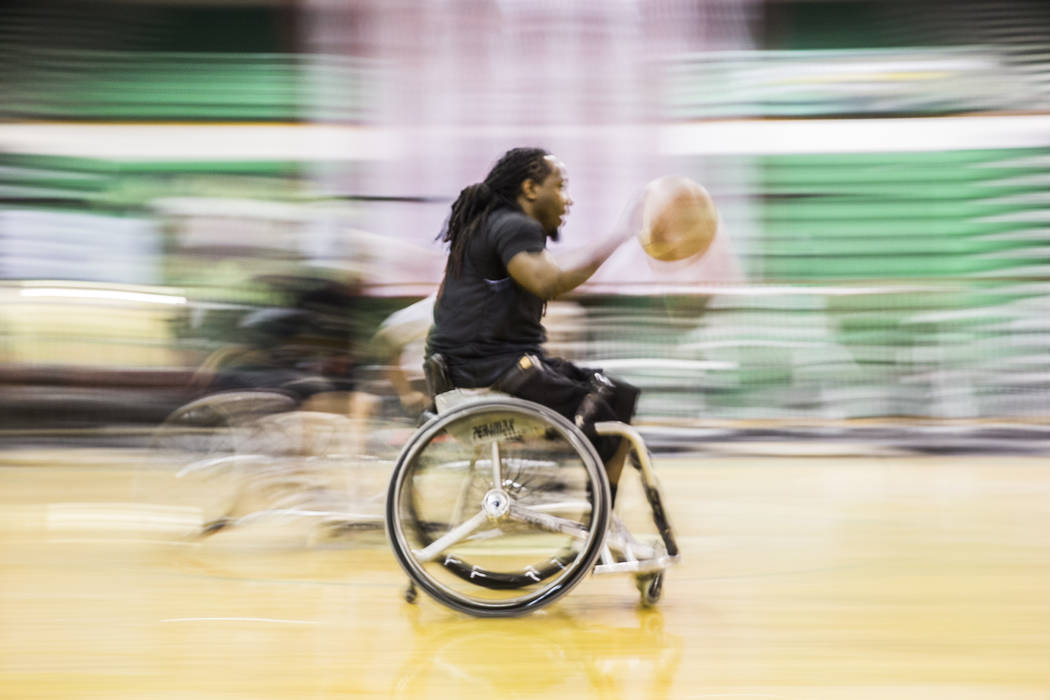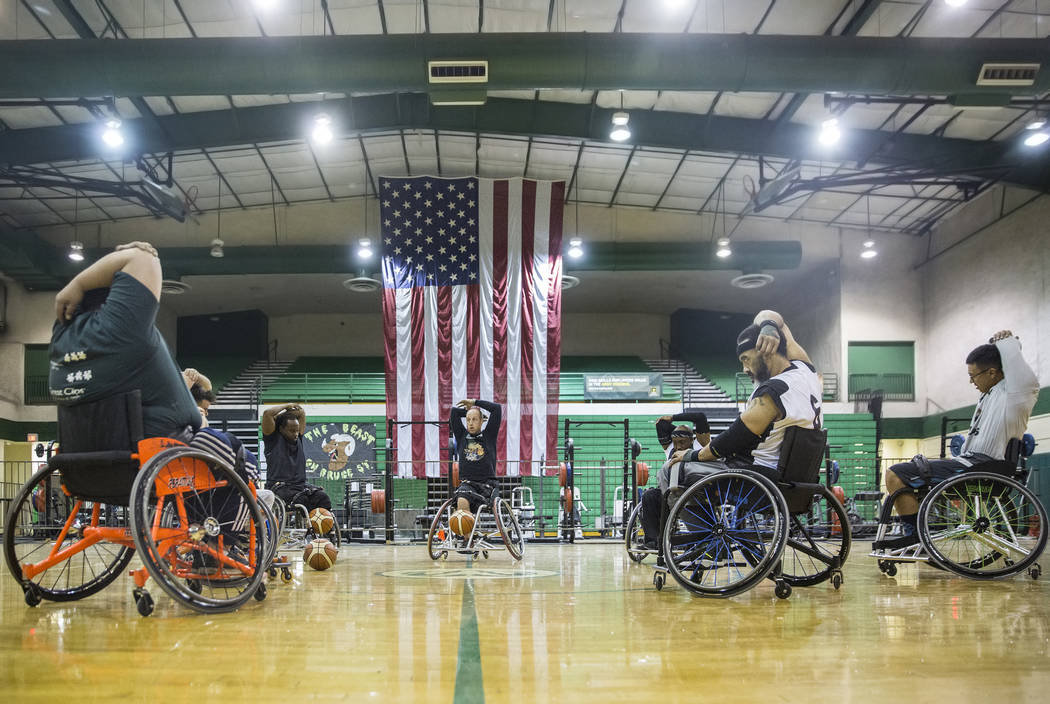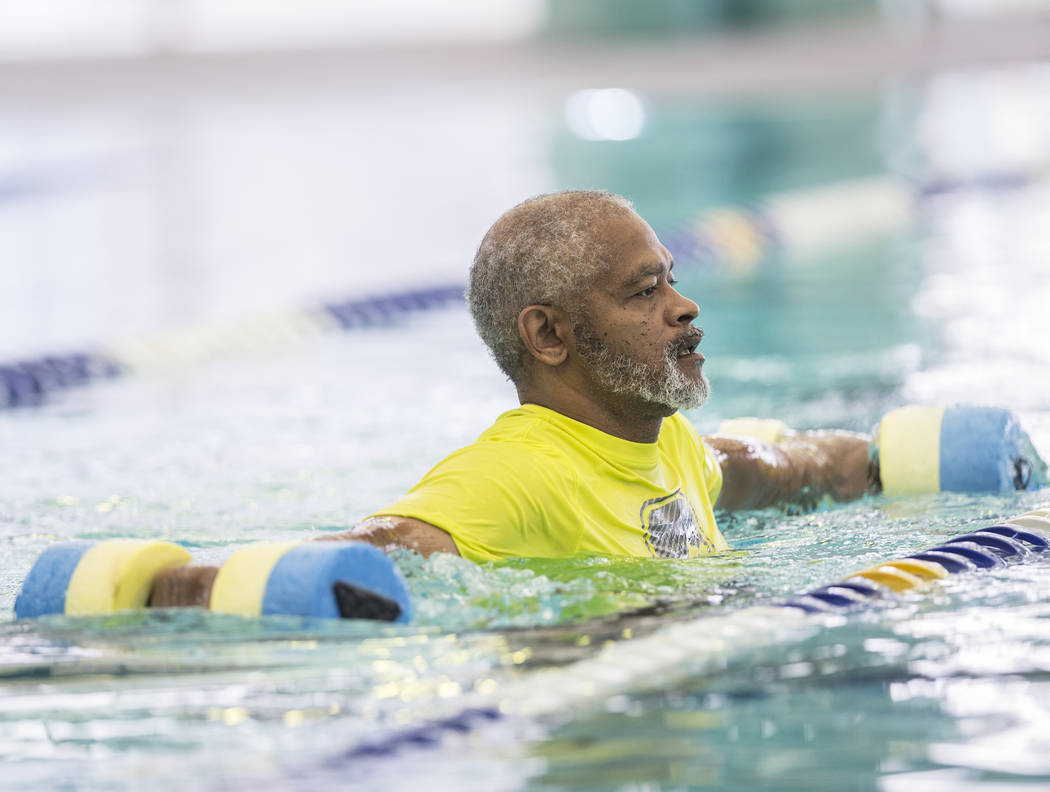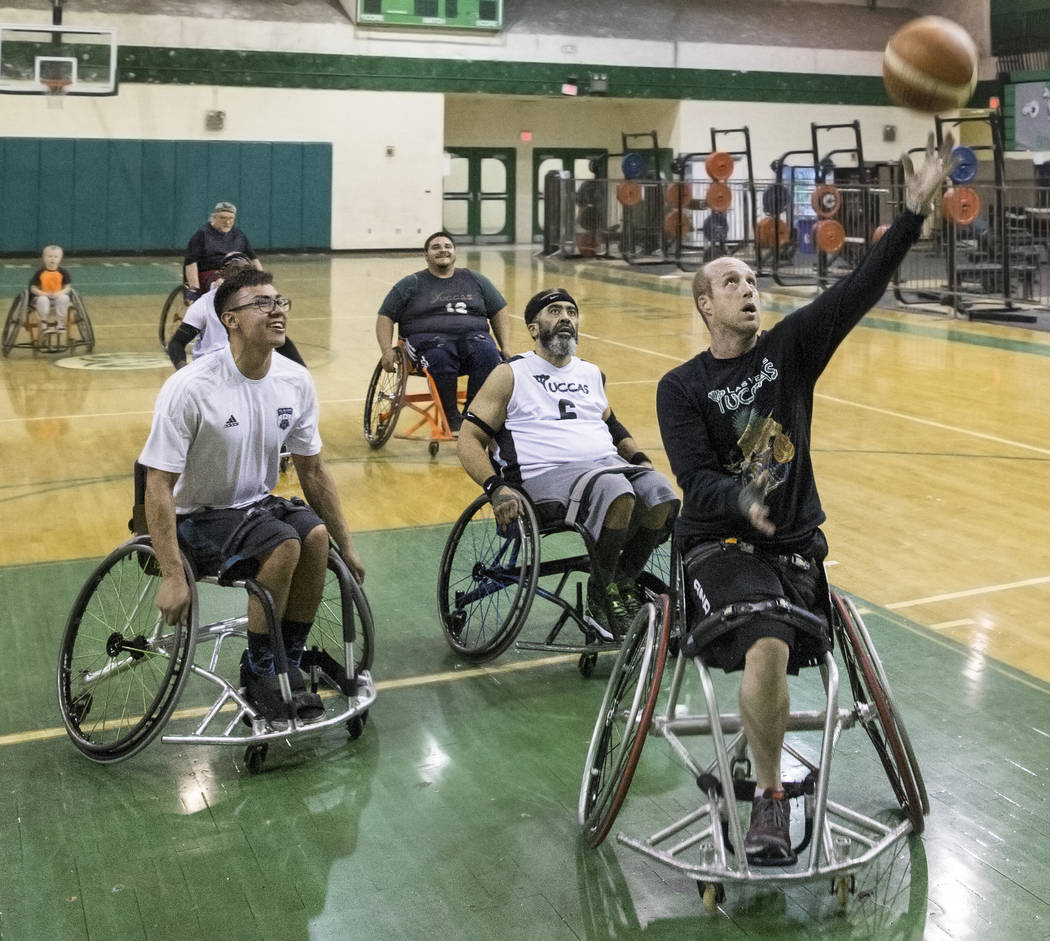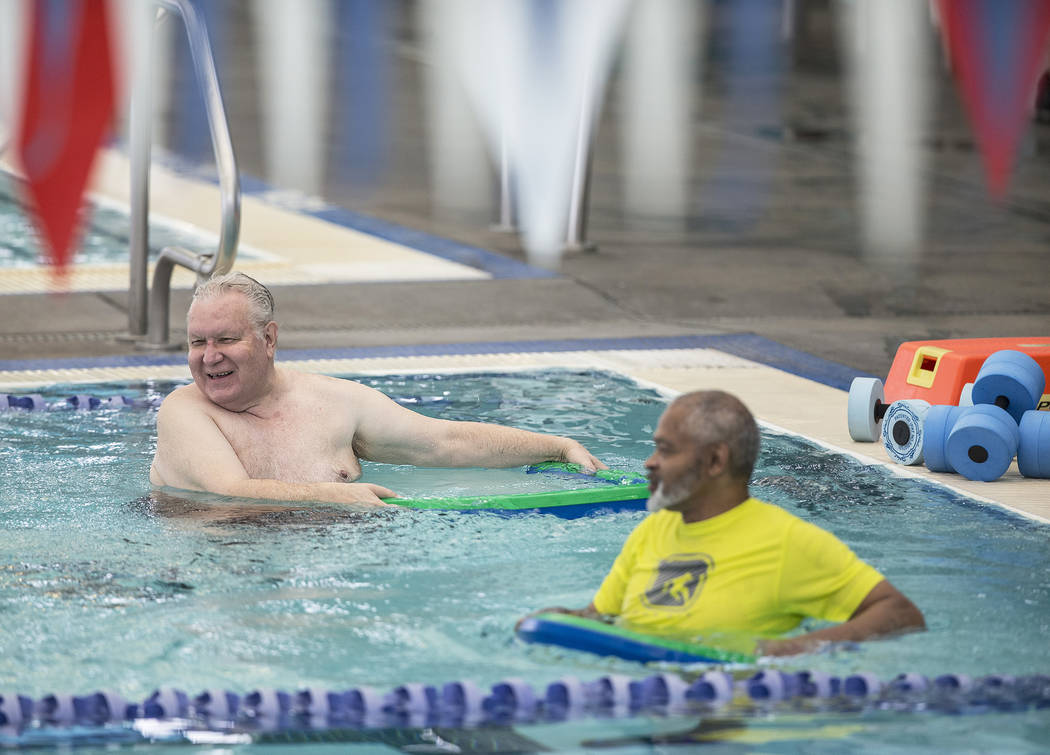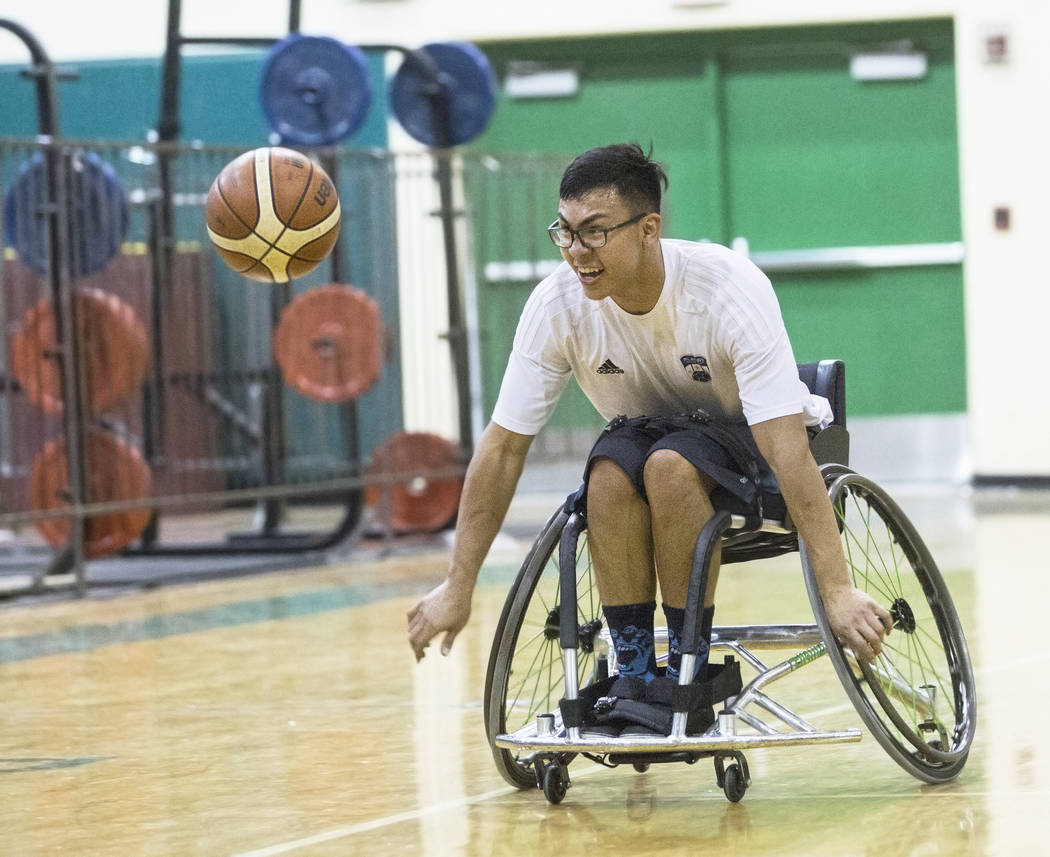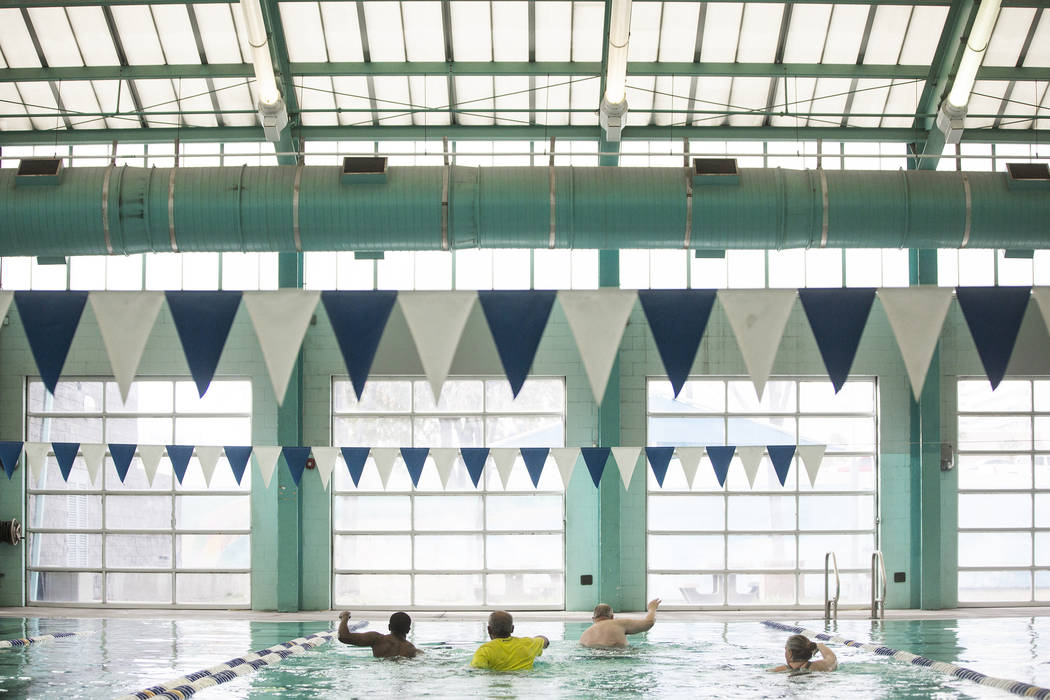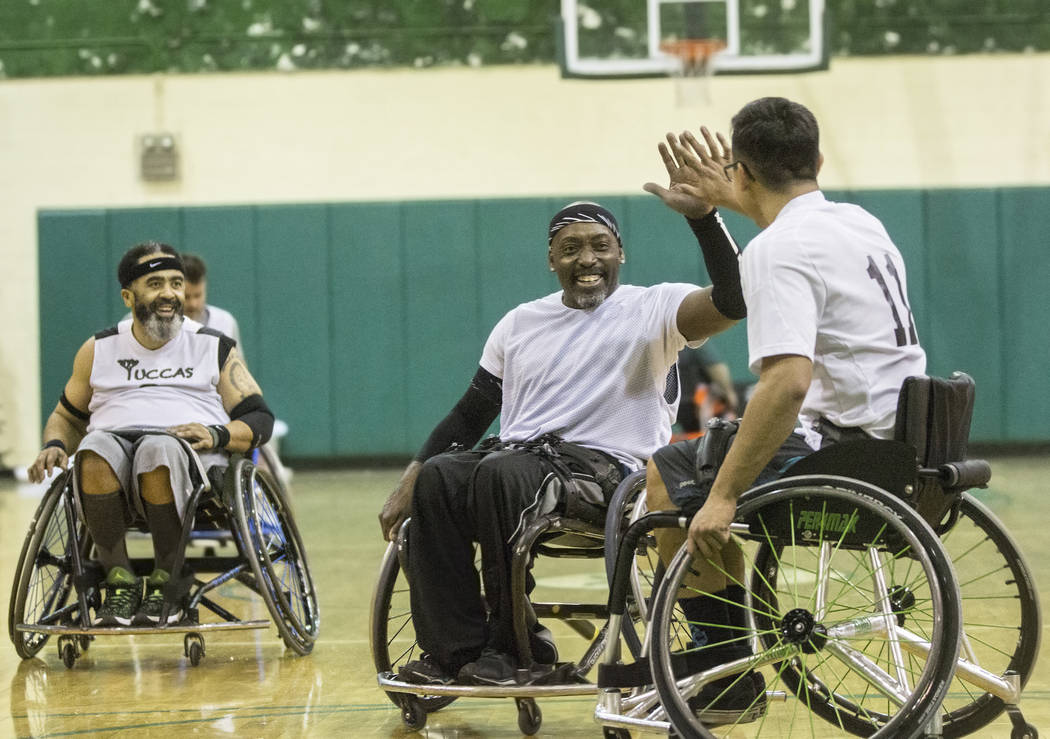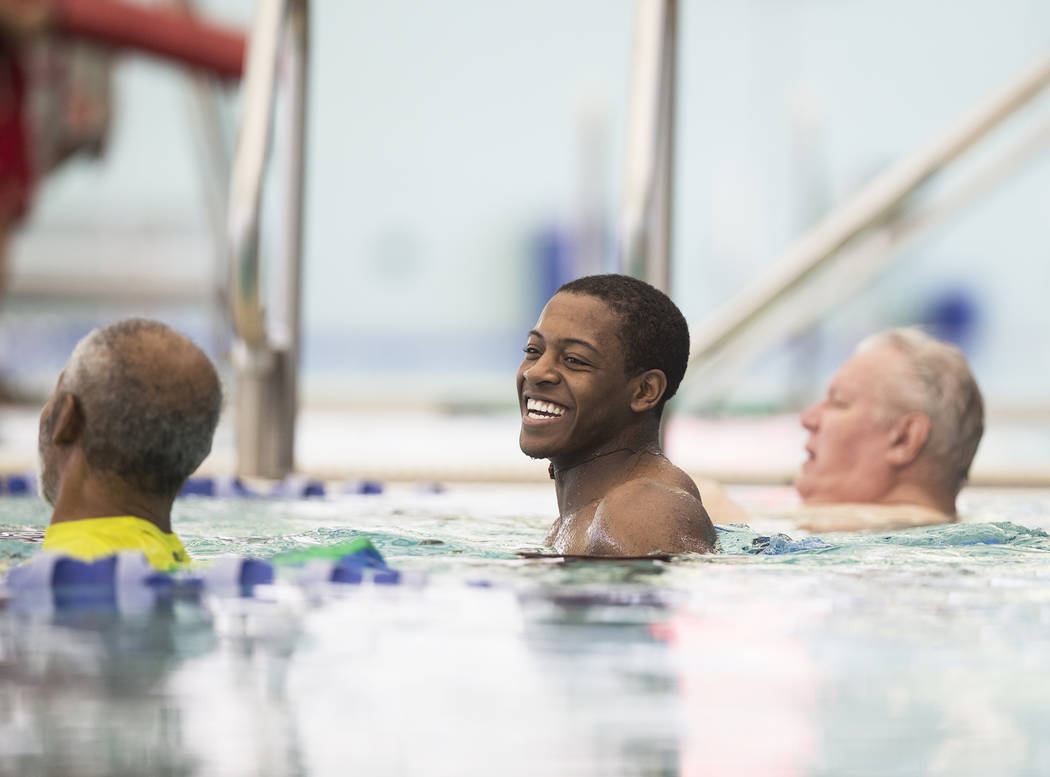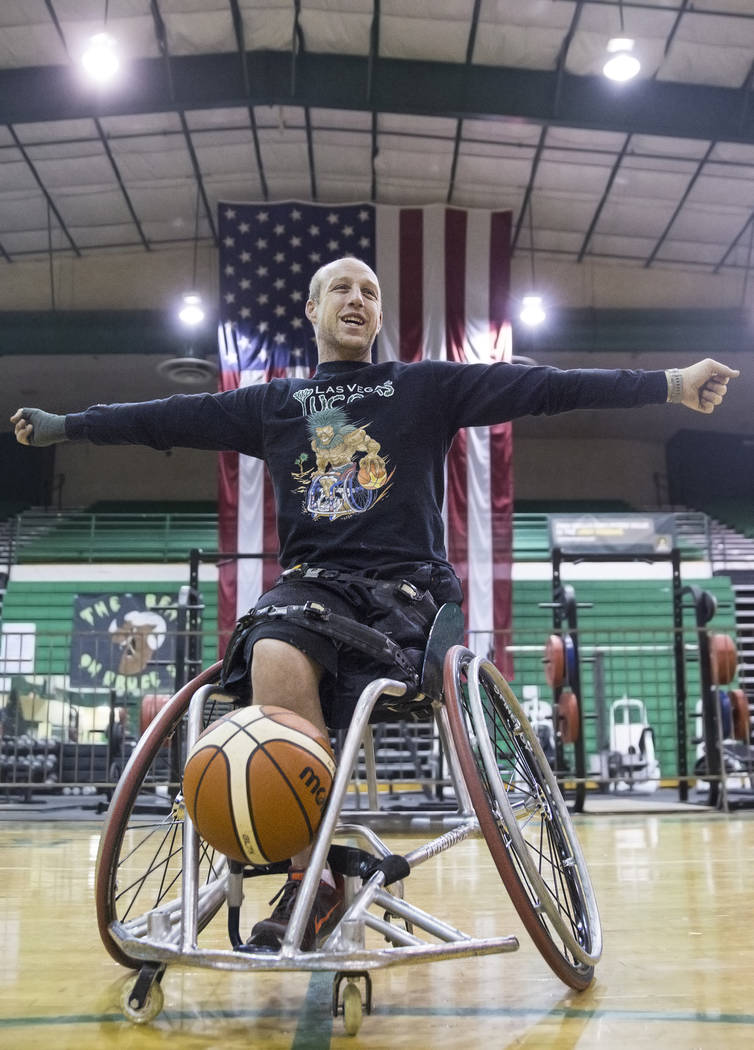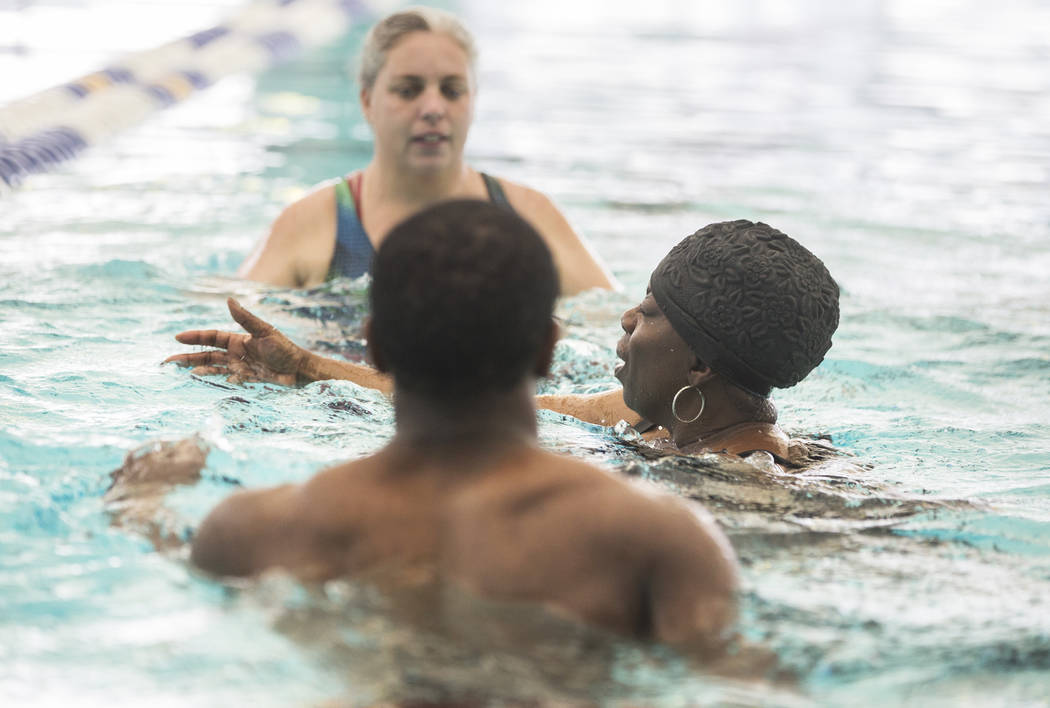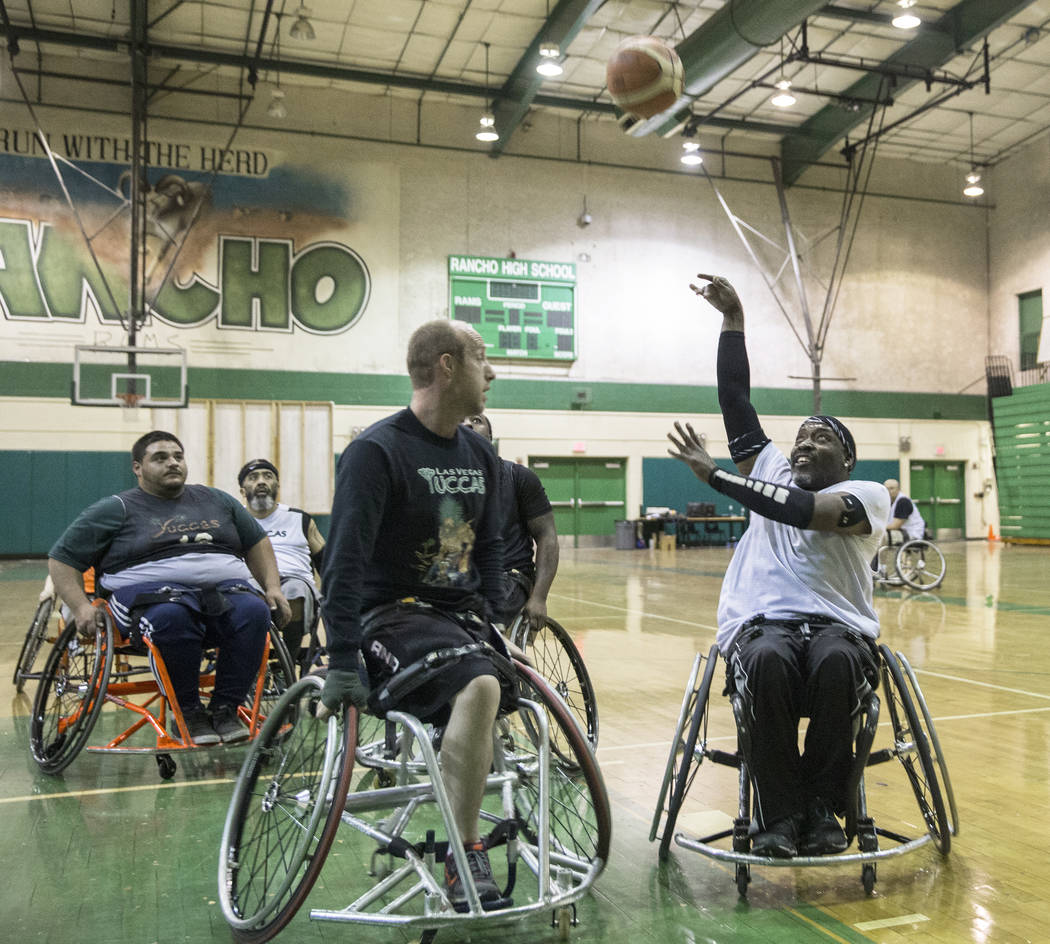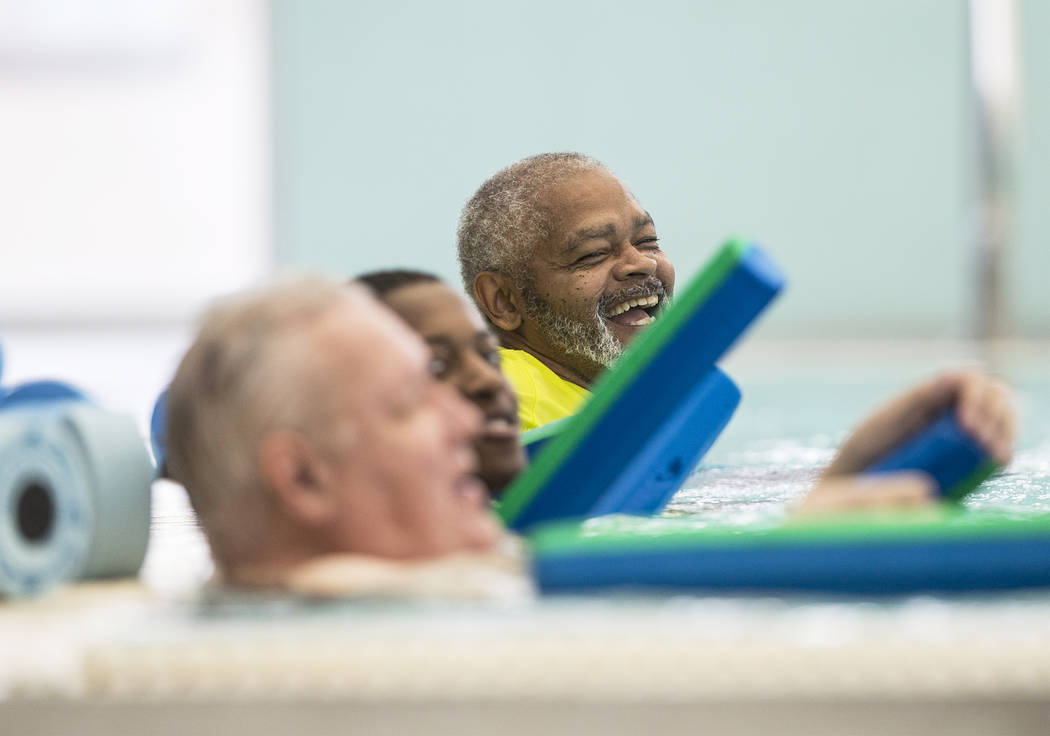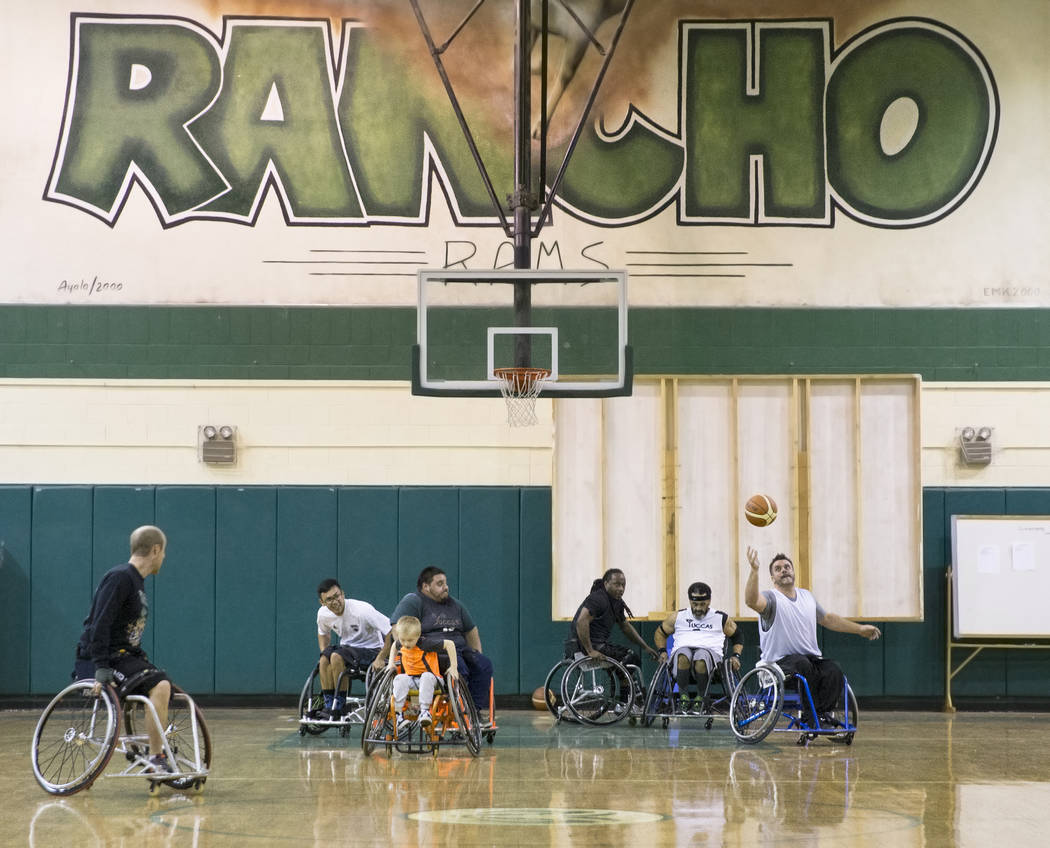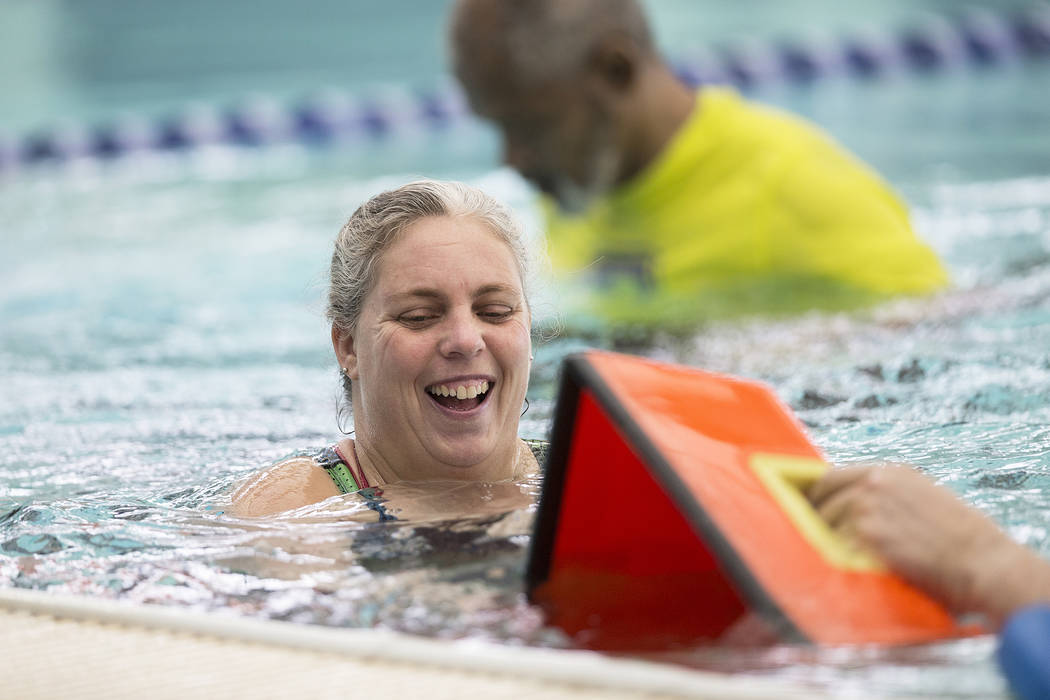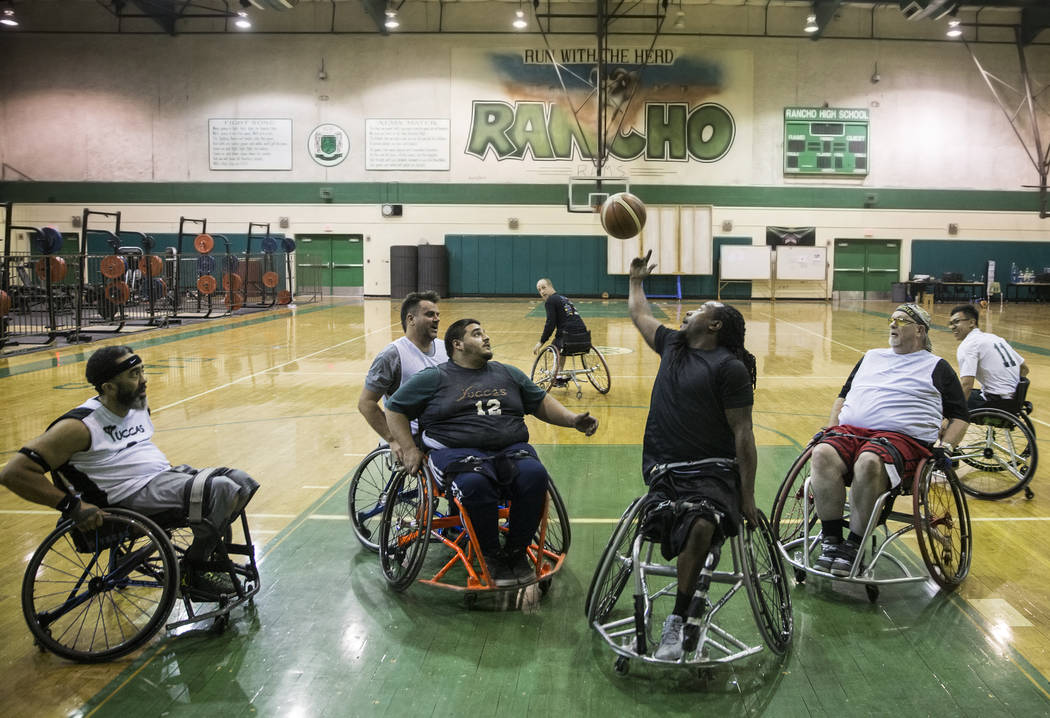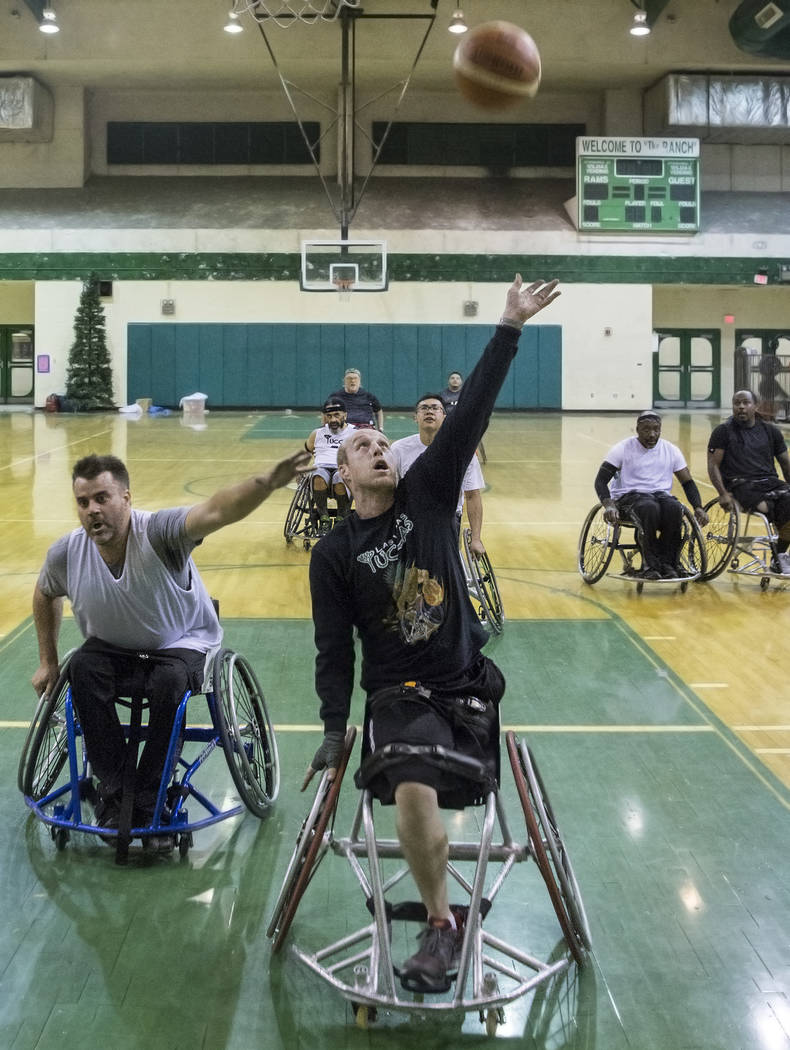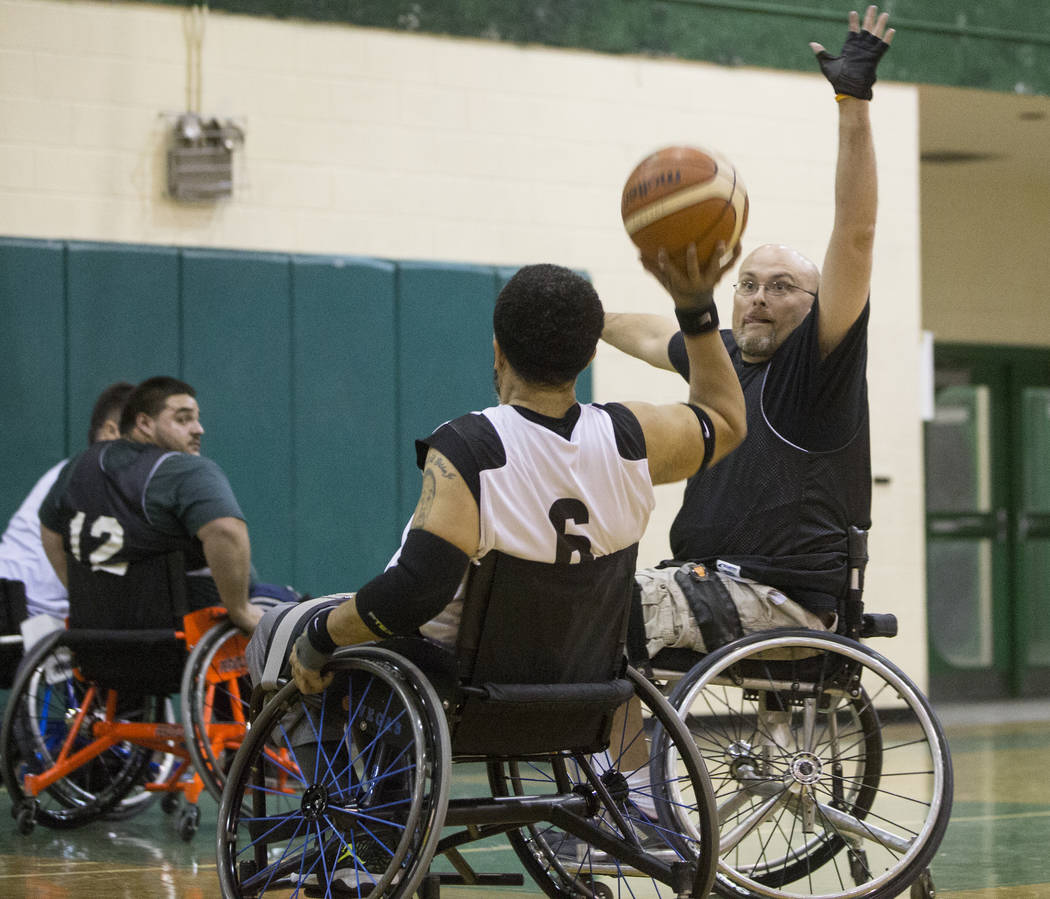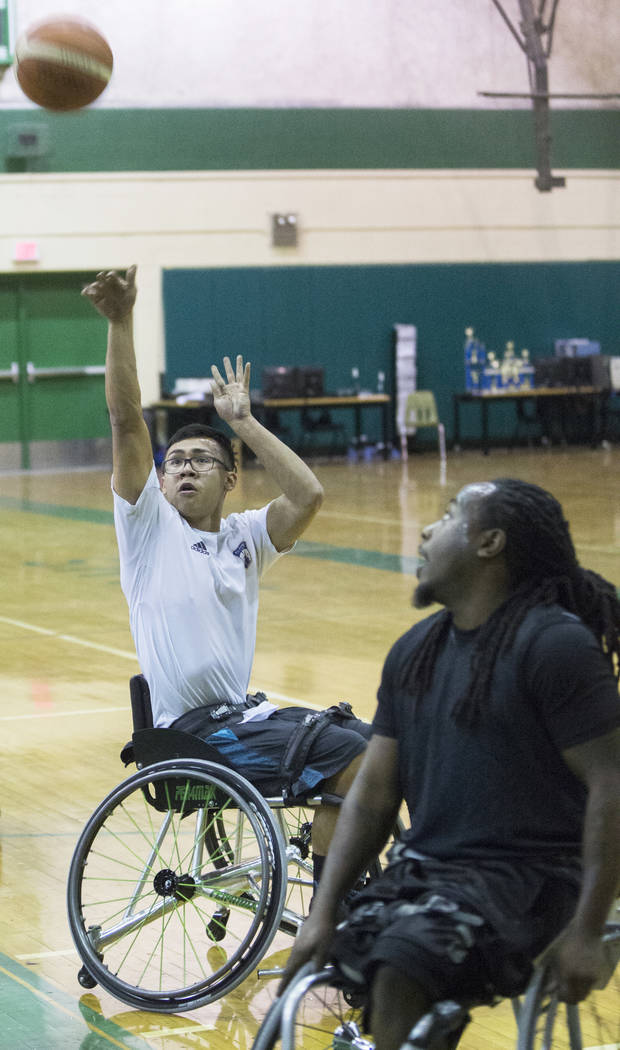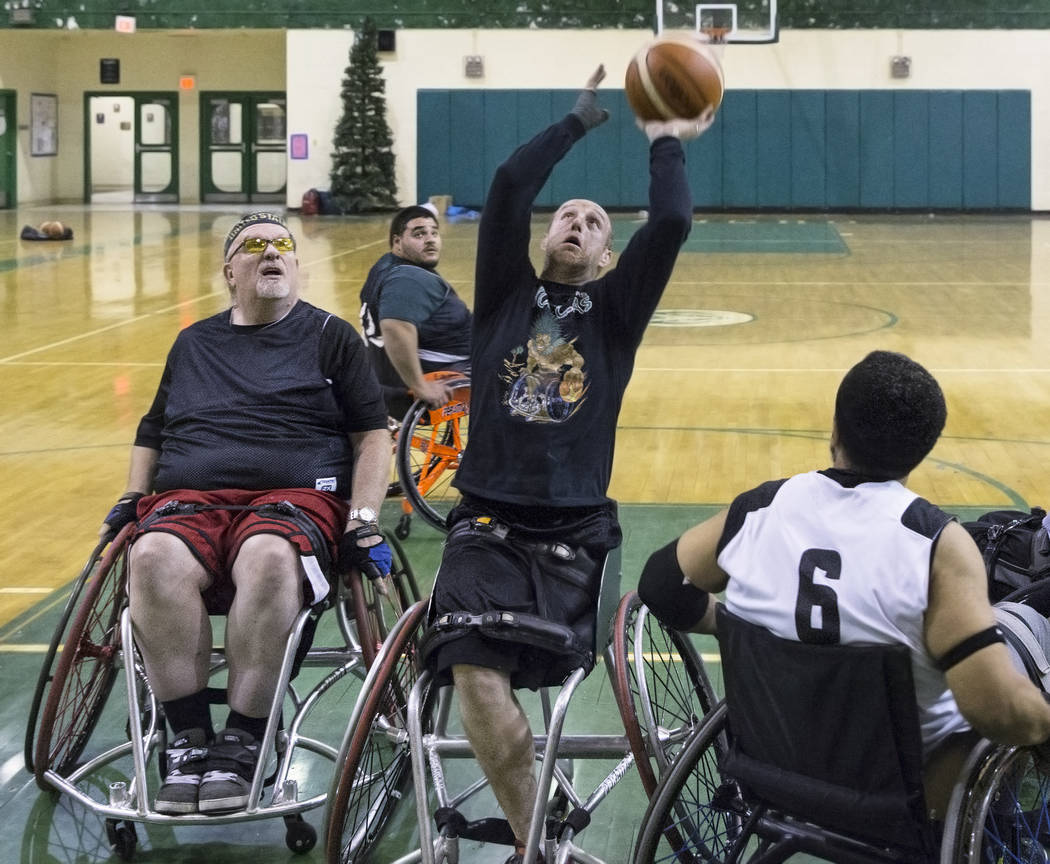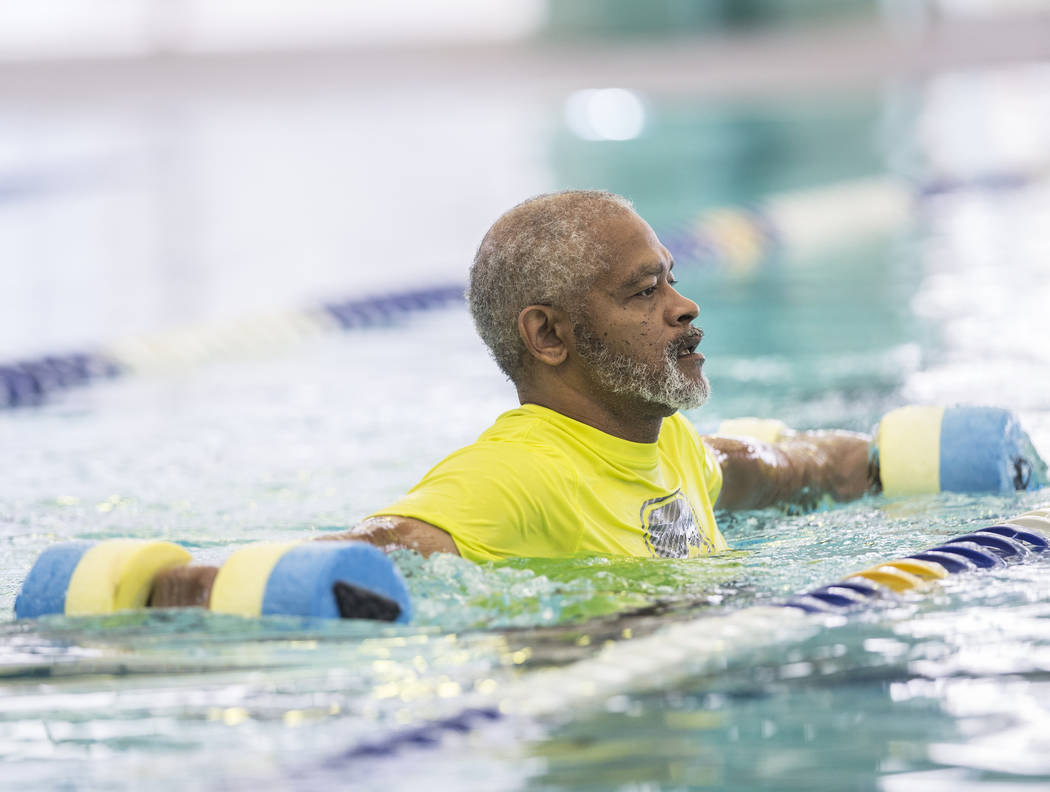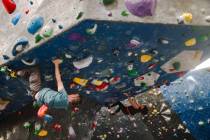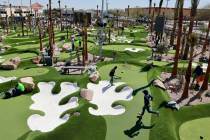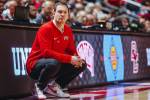Las Vegas’ adaptive rec programs offer fun, health benefits
Balls bounce. Passes fly. Shots soar. Yet no one runs. Not with legs, anyway. “No shot! No shot!’ demands a voice rising from the din. “Pass! Pass!”
Wheels pivot. Chairs screech across the hardwood floor. Several narrowly escape a sideswipe. One doesn’t. When wheels collide, an athlete nearly topples. Shoved upright by a teammate, he spins to straighten his trajectory, chair whipping around with the panache of an action flick stunt. Aiming it like a projectile, he speeds it toward the basket, one hand furiously propelling the wheel, the other lassoing a pass out of the air, then lofting it toward the net.
SWISH. “YESSSS!” Poetry in a different kind of motion.
“I was hit by a truck in 2012, crushed between a Ford F-150 and a brick wall,” says Marcus Hill, 35, the seated speedster who just sank that basket at Rancho High School’s ROTC Gym, his prosthetic leg propped against a wall on the sidelines. “I played basketball before my accident and really enjoyed it. I was watching the Olympics one time and I saw wheelchair basketball. I’ve been here every time since.”
Disabilities be damned within the City of Las Vegas’ adaptive recreation programs. “It’s a completely different game now,” Hill says about his transition from two-legged to two-wheeled basketball as a member of the rec department’s Las Vegas Yuccas, who are also competitors in the National Wheelchair Basketball Association. “You have to use your arms for everything — to shoot the ball, to roll. It’s different spacing on the court and different dynamics. … With these wide wheels, it’s an experience.”
“This was recommended by the Veterans Administration, and boy, it’s helped a lot,” says Vietnam veteran Roger Henning, 71, of Summerlin, about to dip into the refreshing waters of the Las Vegas Municipal Pool on East Bonanza Road, aided by two aquatic therapists. Having long dealt with lingering effects of Agent Orange exposure, he wades in for low-impact curls, squats, water jogging, slow breastroke laps and muscle exercises with foam noodles and barbells.
“The first time I came I said, ‘Are you kidding me?’ because you’re doing stuff that looks like nothing,” Henning says. “But I get out of the pool and I feel a hundred percent better. For days afterward I don’t have joint problems and muscle pains. It’s just amazing.”
Ditto for retired Air Force sergeants Velma Sistrunk (afflicted by arthritis, lung problems and inflammation) and Clarence Wright (kidney issues), whose exertions include gentle stretching and swaying, plus rocking and gliding in place, supervised by instructor Margaret Acevedo. “It’s less impact than on land, because the water holds them up,” she says. “My main goal is to get them independent in the water. They come here because they’re not getting the exercise they need elsewhere.”
Exertions aren’t gentle back at Rancho’s gym, where team bonding is born of adversity and nurtured by camaraderie.
“Every day people get injured — gunshot wounds, car accidents, losing limbs — and we’re here to help,” says 34-year-old wheelchair basketball coach Nathan Carruth, who was born with a musculoskeletal disorder. Carruth is missing a femur, lost his foot to amputation and has only three fingers on his left hand. He wheels down the court with focused ferocity as his non-disabled 6-year-old son, Brayden, races alongside in his own chair.
Stories of guts and grit are everywhere on this court — as with the player whose paralysis turned a hoops hater into a B-ball demon. “Basketball, I never liked it, I kinda sucked, and that’s what makes this funny,” says Cesar Robledo, 21, a wheelchair wonder who later rockets a dead-on pass toward Spina bifida-afflicted Larry Purfoy. Two years ago, Robledo was shot while being robbed.
“I was tired of sitting in the house doing nothing. Now I like it a lot more than able-bodied basketball,” Robledo says. “It’s intense, and even though I’m in a worse circumstance than before, it’s cool I was able to get to this point.” Adds his pass partner, 42-year-old Purfoy: “We’re like brothers around here. There are a lot of people who need to learn about this.”
One who did is 36-year-old newcomer Sean Conroy, born with a tumor on his spinal cord. “I don’t really see people in wheelchairs besides here, so it’s pretty cool to hang out with guys in the same situation,” he says. “I had done sailing in San Francisco, water-skiing in Florida and snow skiing in Northern California, and rock-climbing and kayaking. I always figure out some way to have adventures.”
Delivering good-natured trash talk from the sidelines, Mike Romanowski, 42, chortles at a mid-court pile-up as wheelchairs converge on a loose ball. “We don’t feel bad for each other,” says Romanowski, a retired Air Force airman with multiple sclerosis. “It’s not like, ‘Awww, you have Spina bifida or T-3 spinal cord injury or you’re missing a leg.’ Nobody cares. The last thing you’re going to get here is pity.”
Unless you’ve just seen Coach Carruth bounce three failed shots in a row off the backboard, letting go a loud “Aaaaaaah!” in frustration. Now that’s pitiful.
Get rolling
The city was recently awarded $13,000 from the Department of Veterans Affairs and the Nevada Department of Veterans Services to help subsidize disabled vets' participation.
Yet the offerings are open to anyone with a disability, providing a big-tent service for those who desire its physical and psychological benefits. Program options also include aquatic therapy, golf, biking and fishing. 702-388-9108 or lasvegasnevada.gov



